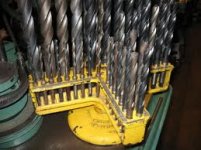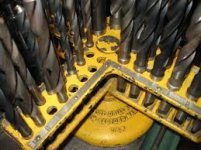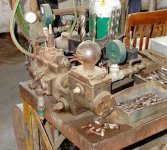Constructed in the '20's, this line shaft machine and welding shop was used by multiple generations of the Hathaway family of Santa Fe Springs, CA. The Hathaways farmed fruit orchards, sold hay and feed, and also were extensively involved in oil field equipment repair.
Their ranch property is now a museum which includes, besides the old shop, the original family home, the old feed mill, numerous outbuildings, and many pieces of farm and oil field equipment and machinery dating back to the early 1900's.
Most of the machine tools in the shop are usable and the line shaft is operated by an overhead electric motor. Museum volunteers periodically work in the shop doing restorations and repair.
Worth a look if you're ever in Southern CA:
Welcome | Hathaway Ranch & Oil Museum
- Richard


















Their ranch property is now a museum which includes, besides the old shop, the original family home, the old feed mill, numerous outbuildings, and many pieces of farm and oil field equipment and machinery dating back to the early 1900's.
Most of the machine tools in the shop are usable and the line shaft is operated by an overhead electric motor. Museum volunteers periodically work in the shop doing restorations and repair.
Worth a look if you're ever in Southern CA:
Welcome | Hathaway Ranch & Oil Museum
- Richard





























